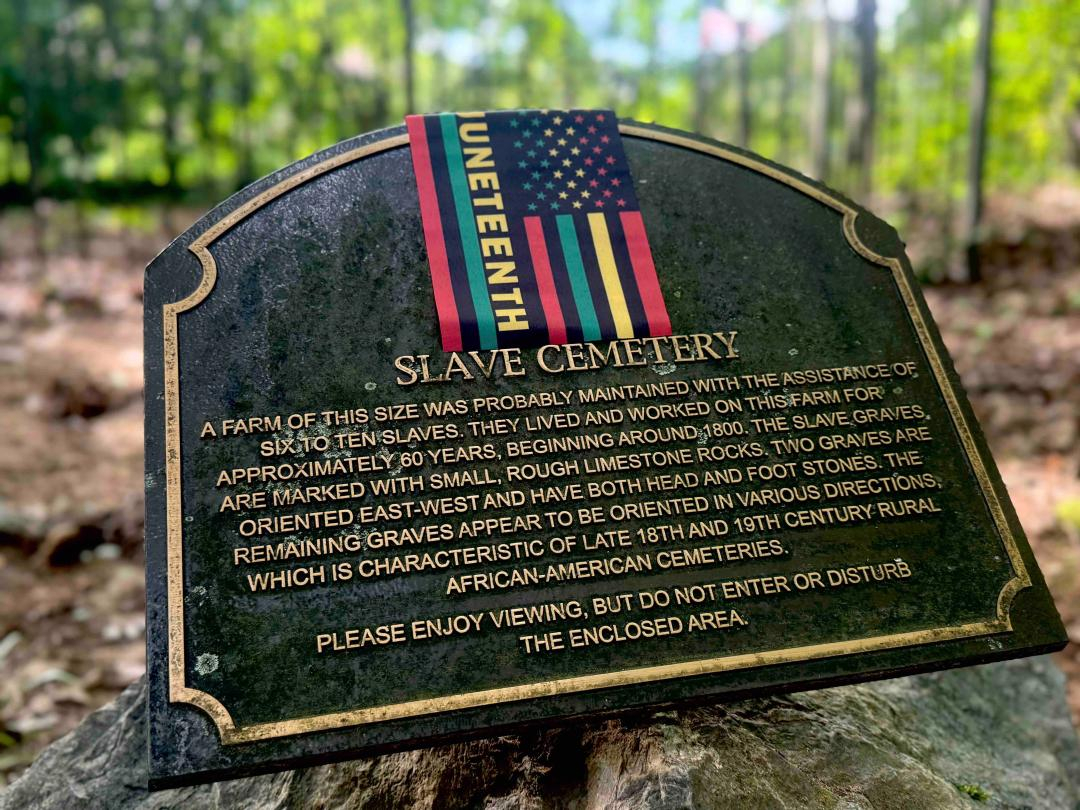Voices (103)
This weekend: Enjoy music, nature and protest at Reclaim the Ridge
Written by Hellbender Press
Allies come together to fight Enbridge’s Ridgeline gas pipeline through Obed watersheds
LANCING — Reclaim the Ridge is a weekend of music, nature, fun and action to raise awareness and funds in opposition to Enbridge’s proposed Ridgeline gas pipeline — set to slice across 122 miles of Tennessee and make 162 waterway cuts through tributaries of the Obed Wild and Scenic River system.
Project opponents and the like-minded plan to gather for Reclaim the Ridge Sept. 5-6 at the Lilly Pad Hopyard Brewery for an unforgettable time featuring live music by The Local Honeys, camping, hiking, swimming and giant puppets from the Cattywampus Puppet Council!
Network alert: Tennessee Sustainability Conference set for Gatlinburg
Written by Cindy Dupree Holloway The towering Space Needle in Gatlinburg offers views of Great Smoky Mountains National Park. The city is host to the Tennessee Sustainability Conference set to begin Aug. 20. Gatlinburg Chamber of Commerce
The towering Space Needle in Gatlinburg offers views of Great Smoky Mountains National Park. The city is host to the Tennessee Sustainability Conference set to begin Aug. 20. Gatlinburg Chamber of Commerce
Conservation education event is hosted in part by Tennessee Chamber to address sustainability challenges
GATLINBURG — The annual Tennessee Sustainability Conference is scheduled to take place Aug. 20-22 at the Park Vista Hotel. The conference is a partnership among Tennessee Recycling Coalition, Tennessee Chamber of Commerce and Industry, and Tennessee Environmental Conference. It brings together environmental professionals from across the region.
Nearby Great Smoky Mountains National Park is an internationally known treasure trove of biodiversity and accompanying sustainability research.
“The three-day event will provide attendees an accelerated learning opportunity featuring the latest trends and best practices in environmental sustainability,” said Tennessee Recycling Coalition Executive Director Amber Greene. “Staying on the cutting-edge of our ever-growing industry is essential to improving the lives of all Tennesseans. I encourage environmental leaders across the state to join us.”
According to organizers, the event will bring environmental professionals, decision-makers, government officials, business and industry leaders, attorneys, consultants, engineers, developers, architects, agribusiness leaders, energy experts, water planning districts, universities, public health officials, and solid waste and recycling experts, from across the region to learn about the latest trends and best practices in environmental sustainability.
- tennessee sustainability conference
- gatlinburg events
- sustainability education
- sustainability research
- sustainable agriculture
- sustainability
- tennessee recycling coalition
- amber greene
- park vista hotel
- learn about sustainability
- brownfield program
- brownfield remediation
- tire disposal
- green events knoxville
- solid waste
- mayors retreat gatlinburg
- great smoky mountains national park
- science research
Bearing witness: Walk for disarmament and lantern ceremony

80th Anniversary events organized by the Oak Ridge Environmental Peace Alliance
Rally and walk action for disarmament
Saturday, August 9 | 10:00 a.m.
Gather at Bissell Park in Oak Ridge.
Join the walk to the gates of Y-12 for a rally with music, street theater and calls for nuclear disarmament.
Lantern Ceremony along the Tennessee River
Saturday, August 9 | 8:00 p.m.
Sequoyah Hills Park in Knoxville
Close the week with a reflective lantern ceremony along the water — honoring the lives lost and our continued commitment to peace.
Visit the OREPA website for details and more events.
Bearing witness to Hiroshima

80th Anniversary events organized by the Oak Ridge Environmental Peace Alliance
Moving personal accounts of time spent in Hiroshima
Friday, August 8 | 6:00–8:00 PM
First Presbyterian Church Knoxville
First, readings from hibakusha Hideko Tamura Snider’s book “One Sunny Day: Childhood Memories of Hiroshima.” Then, Utsumi Gyoshu, Rachel Stewart and author Emily Strasser will each give remarks about recent experiences in Hiroshima. Q&A will follow.
Visit the OREPA website for details and more events.
Bearing witness: The Vow from Hiroshima

80th Anniversary events organized by the Oak Ridge Environmental Peace Alliance
Film Screening: The Vow from Hiroshima
Thursday, August 7 | 6:00–8:00 PM
Central Cinema (TBC)
Join us for a powerful documentary followed by a conversation with co-producer/writer, Mitchie and discussion led by Ed Sullivan.
Visit the OREPA website for details and more events.
Editorial: As summer sizzles and pops, EPA makes a bad energy move
Written by Stephen Smith The Environmental Protection Agency headquarters in Washington, D.C. in the William J. Clinton Federal Building. The EPA is considering changes to pollution regulations intended to at least forestall some risks of global climate change. EPA
The Environmental Protection Agency headquarters in Washington, D.C. in the William J. Clinton Federal Building. The EPA is considering changes to pollution regulations intended to at least forestall some risks of global climate change. EPA
With a backdrop of record heat and floods, EPA moves to deregulate greenhouse gases that are heating the planet
Stephen Smith is the executive director of the Southern Alliance for Clean Energy.
KNOXVILLE — July was brutal: As the Southeast sizzled under a stagnant heat dome, families still struggled to recover from hurricanes Helene and Milton, and communities reeled from catastrophic flash flooding in Texas. Yet in the face of this mounting climate crisis, the government has launched an unprecedented assault on the environmental protections that keep Americans safe.
This week, the new Environmental Protection Agency (EPA) under the Trump Administration moved to repeal the 16-year-old scientific finding that greenhouse gas pollution and emissions from power plants, the oil, gas and coal industries, and vehicle emissions endanger public health and welfare. Without this endangerment finding, the EPA will be forced to abandon its responsibility to set limits on the pollution that’s driving more frequent and severe heat waves, floods and storms.
The EPA has one job: to protect the people and places we love — our families, our communities, our children’s future. It defies logic and common sense to remove the foundational pillars of our pollution rules precisely when climate impacts are accelerating and we need protections and proactive solutions the most. Simultaneously, the Administration is also recklessly slashing funding and staffing at NOAA, the agency responsible for helping us prepare for disasters, and FEMA, the agency responsible for helping us recover from disasters.
The administration is gaslighting Americans by telling us that climate disruption isn’t a threat when we can see with our own eyes the parade of horribles of repeating record-breaking climate disasters. 2024 was the hottest year on record by a wide margin, flash flood warnings in 2025 have already exceeded previous records and American families — from Texas flood victims to Southeast hurricane survivors — are paying the price with their lives, homes and livelihoods.
Bearing witness: Peace Pilgrimage, Names and Remembrance ceremony

80th Anniversary events organized by the Oak Ridge Environmental Peace Alliance
Peace pilgrimage from the Great Smoky Mountains
Peace Walk: Bearing Witness to Hiroshima, August 4–9, 2025
Names and remembrance ceremony
Wednesday, August 6 | 6:00–9:00 a.m.
Location: Across from the Y-12 Security Complex main entrance way in Oak Rige
Join us to honor the victims of Hiroshima with a morning of names and remembrance, bell ringing and a visual tribute of paper cranes; please be sure to bring a chair.
Photo Lecture & Artist Panel
Wednesday, August 6 | 6:30 p.m.
Addison’s Bookstore, 126 S. Gay Street, Knoxville
An evening with Yvonne Dalschen, Black Atticus and guest artists reflecting on the legacy of Hiroshima through art, storytelling and music.
Visit the OREPA website for details and more events.
Bearing witness: Hiroshima, Nagasaki and the end of nuclear weapons
Join us for the first 80th Anniversary event organized by the Oak Ridge Environmental Peace Alliance
First Friday at the Birdhouse — August 1, 5:30-7:30 p.m.
Birdhouse Neighborhood Center, 800 N 4th Ave, Knoxville, TN 37917
This casual OREPA gathering for a special First Friday sneak peek of Yvonne Dalschen’s photo exhibit will include light refreshments and an opportunity to engage with powerful images exploring themes of peace and resistance. All are welcome!
UPDATED 6/25: More details emerge after Trump cuts bleed UT Agriculture Institute of $31 million
Written by Cassandra Stephenson and Ben Pounds The University of Tennessee burial mound on the agriculture campus in Knoxville dates to 644. The mound was constructed by native tribes of the Woodland Period and is on the National Register of Historic Places. Wikipedia Commons
The University of Tennessee burial mound on the agriculture campus in Knoxville dates to 644. The mound was constructed by native tribes of the Woodland Period and is on the National Register of Historic Places. Wikipedia Commons
DOGE bites off $37.7 million in science and other funding from University of Tennessee system; cuts include climate initiatives and pesticide safety education
This story was originally published by Tennessee Lookout. Highlighting added by Hellbender Press. The original story continues below. This story will be updated.
KNOXVILLE — The Trump administration has paused or defunded many programs at American universities, including some notable cuts in agriculture grants at the University of Tennessee.
Systemwide, a total of 42 grants to UT valued at $37.65 million ended, Melissa Tindell, UT’s assistant vice president of communication said, consistent with statistics she’s given other outlets. Eight of these terminated grants were going to the UT Institute of Agriculture and totaled $31.19 million.
Also, across the system, she said, the college had received a total of nine partial stop work orders, meaning students and staff cannot complete portions of those projects, though the total award amount hasn’t been impacted at this time.
“The most immediate impact has been the need to transition students and staff supported by these affected projects to alternative funding sources,” Tindell told Hellbender Press, reiterating a statement for Tennessee Lookout. “Essential work such as reporting, compliance and other research operations continue with adjusted support.”
Among the various research programs with terminated funding are several environmental projects.
- doge cuts
- trump cuts
- trump science cuts
- trump cuts to ut
- University of Tennessee Agricultural Institute
- cattle and climate change
- ut extension outreach
- ut ag campus cuts
- ut indian mound
- tennessee pesticide safety education program
- excet
- grasslands initiative utk
- climate smart grasslands
- doge science cuts
- the grasslands partnership
- climatesmart commodity
- climate smart grassland
- soil health
- biodiversity
Despite blowback and historical revisionism, Juneteenth is cause for grand celebration
Written by Angela Dennis A ribbon commemorating Juneteenth drapes a historic marker in one of Knoxville’s multiple cemeteries where enslaved people are buried. Angela Dennis
A ribbon commemorating Juneteenth drapes a historic marker in one of Knoxville’s multiple cemeteries where enslaved people are buried. Angela Dennis
East Tennesseans find ways to celebrate Juneteenth amid crackdowns on DEI
This story was originally published by Tennessee Lookout.
KNOXVILLE — As cities across Tennessee prepared for Juneteenth celebrations with banners unfurling, vendors setting up and leaders finalizing programs honoring Black liberation, a deeper question lingers: What does it mean to celebrate freedom in a state restricting how that freedom’s history is taught?
In Tennessee, state lawmakers have gutted DEI programs, banned books by Black authors and restricted how teachers can talk about race and history in the classroom.
This year’s celebrations have also come with cutbacks. Across the country, Juneteenth events have been scaled back due to shrinking DEI funding, canceled federal grants and retreat from corporate support for racial justice initiatives.
For many Black educators, organizers and students, the policies feel like a modern day echo of the delayed freedom Juneteenth was created to mark. It represents a continued struggle for true freedom and liberation.
Hellbender Press receives three first-place awards for Helene reporting
Written by Thomas FraserTeam coverage of Sept. 27 disaster spanned three devastated East Tennessee watersheds
KNOXVILLE — Hellbender Press continued its tradition of excellence in journalism in 2024 with award-winning coverage of the unprecedented disaster spawned by Tropical Storm Helene in the Southern Appalachians.
Editor and Publisher Thomas Fraser and writer and reporter John Stambaugh accepted the awards at an East Tennessee Society of Professional Journalists downtown banquet in May.
The society sponsors the competition each year to recognize the best journalism in East Tennessee published in 2024. This year’s contest was judged by the Oklahoma Society of Professional Journalists.
Hellbender Press received three first-place awards in the digital-only category, all related to Helene: Hurricane Helene Breaking Coverage; Deadline/Breaking News Reporting; and Series/Package/Project Writing.
Two of the judges drew parallels with news coverage of other historic events.
Editorial: Clean energy jobs under attack and imperiled in Southeast
Written by Stephen Smith Macon-based Blue Bird is among Southeastern manufacturers that invested heavily in electric vehicle development thanks in large part to parts of the Inflation Reduction Act. The Biden-era IRA is facing blowback from the Trump administration, and the GOP-led Congress is trying to claw back billions already committed by the law. Blue Bird
Macon-based Blue Bird is among Southeastern manufacturers that invested heavily in electric vehicle development thanks in large part to parts of the Inflation Reduction Act. The Biden-era IRA is facing blowback from the Trump administration, and the GOP-led Congress is trying to claw back billions already committed by the law. Blue Bird
After DOGE, thousands of jobs still threatened and climate action under assault by GOP-led Congress
Stephen Smith is the executive director of the Southern Alliance for Clean Energy and chairs the Board of Directors of the Foundation for Global Sustainability, of which Hellbender Press is a project.
KNOXVILLE — As we navigate the complex landscape of America's energy transition, the Southeast finds itself at a critical juncture where federal policy decisions are attempting to block and reverse our region's clean energy future—and push up your monthly utility bills. This is not hyperbole; it is a sad reality that needs a strong response from those of us who want a clean, safe, vibrant future in which we all thrive.
The GOP-backed bill that moved from the House to the Senate threatens to undermine $73 billion in clean energy investments across our region by abruptly blocking federal policy support that has unleashed America’s clean energy economy, grown manufacturing and investments in the Southeast, and given citizens across our region ways to save money on energy while protecting human and environmental health.
If passed, this legislation could trigger utility rate increases nationwide, hitting households already struggling with rising costs. The timing couldn't be worse, as utility companies across the Southeast are rushing headlong into expensive and risky ventures—from nuclear plant construction to powering energy-hungry data centers—without adequate planning, regulation, or public input. Georgia Power's latest Integrated Resource Plan process and TVA’s rush to build new small nuclear reactors exemplify this troubling trend, proposing changes virtually guaranteed to increase customer bills while maintaining heavy reliance on polluting fossil fuels.
Updated 4/18: Smoky gray: Former Smokies leader warns of more funding cuts; popular campsites remain closed; still little information on cuts at Great Smoky Mountains National Park
Written by Elan Young, Ben Pounds and Thomas Fraser Campers are seen enjoying a morning at Elkmont Campground in Great Smoky Mountains National Park. Elkmont is one of the Smokies campgrounds still open. National Park Service
Campers are seen enjoying a morning at Elkmont Campground in Great Smoky Mountains National Park. Elkmont is one of the Smokies campgrounds still open. National Park Service
National parks advocate and former Smokies official warns of funding shortfalls as closures continue, concerns persist, and people resist
KNOXVILLE — Funding for national parks has never amounted to much, and the federal government will cut even more if people don’t speak out in defense of the country’s natural and ecological crown jewels.
That was the message from Phil Francis, chairman of the Coalition to Protect American National Parks and former acting superintendent of Great Smoky Mountains National Park. He spoke to an audience at Knoxville’s Schulz Bräu Brewing Company hosted by Discover Life in America. Francis said that due to rising concerns his organization grew from 500 members to over 4,000 during the Trump administration. The coalition, he said, includes many people like himself who used to work for the park system, including the former superintendent of Acadia National Park.
Francis advocated that others should lobby government officials to continue to support the parks.
“If you don’t speak up, it makes it a lot more difficult,” he told the audience.
- elan young
- smokies job cuts
- federal job cuts
- rangers
- smokies rangers fired
- how many lost jobs at smokies
- smokies parking fees
- great smoky mountains economic impact
- national parks conservation association
- association of national park rangers
- hellbender press reporting on job cuts
- probationary workers fired
- great smoky mountains national park
- big south fork national river and recreation area
- maintenance backlog
- jeff hunter
- bill wade
- cades cove loop road
- carfree experience in cades cove
- carfree wednesdays in cades cove
- garry shores
- townsend
- townsend protest
- gatlinburg protest
- phil francis
- discover life in america
- ben pounds
- national park funding
- trump national park cuts
Have a cold one with former Smokies official at this month’s Conservation on Tap
Written by Hellbender Press
KNOXVILLE — Discover Life in America has a newly established partnership with Schulz Bräu Brewing Company to host its monthly Conservation on Tap speaker series.
The latest installment of the series at the new venue is 7 p.m. April 16. Join Conservation on Tap at Schulz Bräu Brewing Company, 126 Bernard Ave, Knoxville.
Join us for an insightful presentation by Phil Francis, Chairman of the Coalition to Protect America’s National Parks, and former acting superintendent of GSMNP, as he provides an update on the current challenges facing the National Park Service and our national parks.
Francis will discuss the critical resources that need protection and the staffing necessary to ensure the preservation and maintenance of these cherished public lands. This event is a must-attend for anyone passionate about the future of America’s national parks and the efforts needed to safeguard them for generations to come. Learn more at: protectnps.org.
Come support local conservation efforts and enjoy a wide selection of 20+ beers on-tap (and plenty of nonalcoholic beverages) and some authentic German fare from Schulzes Schnitzel Kitchen.
- discover life in america
- schulzbrau
- knoxville environmental events
- nature lectures knoxville
- kimberly smith
- wilderness society
- safe passage i40 pigeon river gorge wildlife corridor
- wildlife corridor
- smokies cuts
- phil francis
- conservation on tap
- federal science cuts
- great smoky mountains national park
Editorial: I’m from Oak Ridge. Federal cuts threaten my career as a scientist.
Written by Sarah Nelson Sarah Nelson stands with a copy of The Journal of Undergraduate Research, which ran her first scientific publication in 2003. It was researched during her time as an intern at Oak Ridge National Laboratory. Nelson is now a senior research scientist. Derek Armstrong via BlueSky
Sarah Nelson stands with a copy of The Journal of Undergraduate Research, which ran her first scientific publication in 2003. It was researched during her time as an intern at Oak Ridge National Laboratory. Nelson is now a senior research scientist. Derek Armstrong via BlueSky
Federal science cuts, in Oak Ridge and beyond, threaten American health and innovation
Sarah Nelson, MPH, PhD, is a senior research scientist in Seattle studying the genetic causes of complex health conditions. Hellbender Press has previously reported on changes to Oak Ridge federal facilities since the start of the second Trump Administration. This op-ed was originally published by KnoxNews.
OAK RIDGE — My mother has been cleaning out the attic in her Oak Ridge house and very reasonably decided my sisters and I should become the stewards of the memorabilia from our childhoods and early adulthoods. The box she recently mailed me included my first scientific publication, from my undergraduate summer internship at the Oak Ridge National Laboratory Mammalian Genetics Section (the “Mouse House”) in 2002.
Over 20 years later, I am a senior research scientist and author on 60+ scientific publications mostly related to understanding how genetic variation contributes to different human diseases.
Even before I received that box in the mail, I had been reflecting on why I chose a career in scientific research — mainly because, since January, I am no longer sure if and how I will be able to continue pursuing it. Federally funded scientific research is being attacked and dismantled by the administration of President Donald Trump, threatening the entire scientific enterprise. The situation is dire, and I urge you to join me in staying informed and speaking out against these existential threats to science.
More...
Editorial: Despite the rhetoric, responsible growth is a bipartisan goal
Written by Coffee County for Responsible Growth
Coffee County is under development pressure, but it’s not a political fight
This editorial was provided by Coffee County for Responsible Growth, but applies to planning and development debates throughout the Southeast.
MANCHESTER — We keep hearing the claim that land protection, conservation and zoning are “liberal issues.”
Let’s set the record straight: That’s simply not true.
Protecting Coffee County’s farmland, water, infrastructure and rural way of life isn’t a political talking point — it’s common sense. And it’s deeply bipartisan.
We’ve got Conservatives, Republicans, Democrats, Independents and Libertarians all standing together. Not because of party lines — but because we love where we live, we recognize the importance of agriculture, and we value community.
Play Knoxville: Put an idea pin in public recreation assets, greenways and parks
Written by City of Knoxville Those with ideas they want to contribute to the Knoxville Parks and Rec master plan can do so by way of an interactive map. Shown here are many of the center city’s public recreation assets. Note the size of the Urban Wilderness, a valuable natural and recreational resource accessible to the visitors and the city’s 200,000 residents. Hellbender Press
Those with ideas they want to contribute to the Knoxville Parks and Rec master plan can do so by way of an interactive map. Shown here are many of the center city’s public recreation assets. Note the size of the Urban Wilderness, a valuable natural and recreational resource accessible to the visitors and the city’s 200,000 residents. Hellbender Press
The city invites the public to share input on the future of Knoxville parks, including greenways and the urban wilderness; citizens can put a pin in a park with their ideas
KNOXVILLE — The public engagement phase for Play Knoxville, the City’s Parks & Recreation Master Plan, is now underway. The master plan will help guide investments in parks, greenways, community centers and programming over the next decade.
The planning process started in January with the formation of a steering committee of community leaders. Since then, city staff and consultants from Perez Planning + Design have conducted dozens of focus groups, one-on-one meetings with City Council and cabinet members, and site visits to nearly 70 parks across Knoxville.
Over the coming weeks, community members will have multiple opportunities to provide input through neighborhood and community meetings; public events; direct outreach and social media engagement; an interactive mapping tool and an online survey.
The Play Knoxville website is now live.
- knoxville parks master plan
- get involved in city government
- knoxville city government
- knoxville greenways
- park planning in knoxville
- perez planning + design
- play knoxville
- knoxville citizen engagement environment
- does knoxville have nice parks
- urban wilderness
- urban wilderness gateway park
- urban wilderness knoxville
Editorial: Old paradigms persist in proposed development of urban forest at UNC Asheville
Written by Noah Poulos UNC Asheville seems poised to develop a 45-acre forested tract in North Asheville into university amenities and housing. A grassroots movement has emerged to fight the proposal, such as Save the Woods, which has 3,000 members on Facebook. Save the Woods via social media
UNC Asheville seems poised to develop a 45-acre forested tract in North Asheville into university amenities and housing. A grassroots movement has emerged to fight the proposal, such as Save the Woods, which has 3,000 members on Facebook. Save the Woods via social media
The university indicates development of 45-acre wooded property is pending as community rallies
Noah Poulos is a farmer, writer, educator and UNC Asheville graduate who lives in Western North Carolina.
ASHEVILLE — Many have come to know a small forest in North Asheville as an extension of their home.
In these humble woods of the Experimental Forest, near a botanical park and U.S. Forest Service research station, pileated woodpeckers peck vigorously in the canopy. Towering pines dapple the light on the forest floor as day turns to dusk.
It is a place that has become a mainstay of this community and people are deeply connected to it — through stories, memories, relationships and a deep appreciation for what a small woodland can offer.
This forest, while open to the public, is owned by UNC Asheville, which recently shared plans to develop it for additional campus amenities.
Opposition has arisen to the university’s development plans, especially since a statement from the institution that strongly implies development will proceed as part of an overall expansion and revenue plan.
Industry-backed legislation would bar the science behind hundreds of environmental protections
Written by Sharon Lerner Trichloroethylene is among the chemicals deemed a serious public health risk by way of the Environmental Protection Agency’s IRIS database. Legislation in Congress could bar the use of IRIS and its associated scientific methods from being used to calculate the environmental and human health risks of chemicals such as TCE, a proven carcinogen. ChemLibrarian/Wikipedia Commons
Trichloroethylene is among the chemicals deemed a serious public health risk by way of the Environmental Protection Agency’s IRIS database. Legislation in Congress could bar the use of IRIS and its associated scientific methods from being used to calculate the environmental and human health risks of chemicals such as TCE, a proven carcinogen. ChemLibrarian/Wikipedia Commons
Two bills in Congress would prohibit the Environmental Protection Agency from using hundreds of chemical assessments completed by its IRIS program in environmental regulations or enforcement.
This story was originally published by ProPublica.
WASHINGTON, D.C. — For decades, Republican lawmakers and industry lobbyists have tried to chip away at the small program in the Environmental Protection Agency that measures the threat of toxic chemicals.
Most people don’t know IRIS, as the program is called, but it is the scientific engine of the agency that protects human health and the environment. Its scientists assess the toxicity of chemicals, estimating the amount of each that triggers cancer and other health effects. And these values serve as the independent, nonpartisan basis for the rules, regulations and permits that limit our exposure to toxic chemicals.
Now IRIS faces the gravest threat to its existence since it was created under President Ronald Reagan four decades ago.
Legislation introduced in Congress would prohibit the EPA from using any of IRIS’ hundreds of chemical assessments in environmental rules, regulations, enforcement actions and permits that limit the amount of pollution allowed into air and water. The EPA would also be forbidden from using them to map the health risks from toxic chemicals. The bills, filed in both the U.S. Senate and House of Representatives earlier this year, are championed by companies that make and use chemicals, along with industry groups that have long opposed environmental rules. If it becomes law, the “No IRIS Act,” as it’s called, would essentially bar the agency from carrying out its mission, experts told ProPublica.
“They’re trying to undermine the foundations for doing any kind of regulation,” said William Boyd, a professor at UCLA School of Law who specializes in environmental law. Boyd noted that IRIS reports on chemicals’ toxicity are the first step in the long process of creating legal protections from toxic pollutants in air and water.
“If you get rid of step one, you’re totally in the dark,” he said.
If the act passes, companies could even use the law to fight the enforcement of environmental rules that have long been on the books or permits that limit their toxic emissions, environmental lawyers said.
- iris
- propublica
- chemical regulation
- chemical pollution epa
- chemical database
- no iris act
- sharon lerner
- tce
- epa chemical regulations
- trump and environment
- environmental regulations
- carcinogens
- public health protection
- worst chemicals
- forever chemicals
- propublic environment
- propublica environment reporting
- best environmental reporting
- integrated risk information system
- toxic pollution
- environmental protection agency
